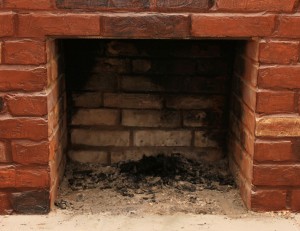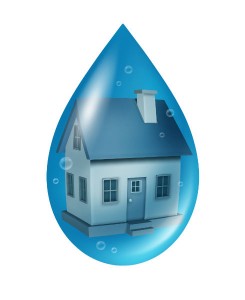by Mike O'Mara | Jun 9, 2014 | Chimney Maintenance
What is the one thing that’s been an annoyance to chimney owners everywhere? Masonry stains. Throughout time, numerous homeowners have complained and scratched their heads over the hassle and irritation that these unwanted stains bring.

At Weststar, we care about and respect each of our customers, and are dedicated to ensuring that their chimneys and dryer vents are well-maintained and functioning properly. Whether you need masonry repair or annual maintenance, we’re here to help.
Here at Weststar Chimney Sweeps, we do our best to cater to your chimney needs. So, here are a few things that you should know about chimney stains.
Not all stains are created equally.
The stain on your chimney is characterized by the source of the stain. Once you are able to identify which type of stain you have, it will be easier on you or the chimney professional that you hire to find a solution.
The following are some of the most common stain complaints:
- Smoke – It only makes sense that majority of the chimney owners complain about having smoke stains and are earnestly looking for ways to remove them. Since smoke is a natural byproduct of burning and the chimney is an area where the burning process occurs frequently, there presence of smoke is inevitable. Smoke stains, therefore, are going to occur.
- Mildew – This is the white substance (a fungus, to be more specific) that usually grows on the surface of wet or warm conditions.
- Efflorescence – This is that white, powdery and, often times, fluffy stuff (or so it appears) that accumulates around your chimney masonry.
- Rust – We all know what rust looks like, right? And you may say that rust only appears in metal materials. But actually, rust thrives on both metal and nonmetal surfaces, therefore, you shouldn’t be surprised if you find a little rust in your chimney masonry every now and then.
- Paint – It may range from small whisks to huge splatters. Paint stains are usually brought about by artistic or domestic accidents. It may happen to households with or without children and is one of the most common chimney masonry stains.
How can you remove these stains?
As each stain is classified differently based on its cause, there are also various methods and chemicals used to remove each type of stain. Boral.com has a short summary of ways to remove various stains. But to some people, handling chemicals is something with which they’re not really comfortable. Another option, therefore, is to contact a professional to help you out.
Gone are the days when you had to worry about your chimney masonry stains. The answer to all your stain problems is just a phone call or email away. So what are you waiting for?
by Mike O'Mara | Sep 29, 2013 | Chimney Maintenance
Water Leaks In the Chimney Are Never Good!
When most people think about problems that could occur with their chimney, they imagine animals moving in or leaves preventing proper ventilation. What they do not consider is what might happen if excessive amounts of water accumulate within the chimney. In fact, water leaks in the chimney can present some of the most dangerous situations in a chimney. Every homeowner should be aware of the risks and make sure that their chimney is safe and dry. And if there is water making its way in, we can repair it.

A properly installed chimney cap and fitted flashing goes a long way toward waterproofing your chimney.
When the chimney becomes wet, it will quickly weaken and begin to crumble. Homeowners should keep in mind that this is true not only of a masonry fireplace but also of a prefabricated model. Once it starts to crumble, it is only a matter of time before the fireplace starts to collapse. This damage can quickly spread and cause structural damage to the home that will go much father than the fireplace.
Another thing to keep in mind when water enters the chimney is that it will freeze and melt along with the weather. This means that the material in the chimney will expand and contract each time. The result will be cracks in the chimney, which not only compromise the stability of the structure but can cause a great deal of other dangers. This is often the condition that starts a domino effect of dangerous chimney issues.
Once there are cracks in the chimney, the heat barrier is not as effective as it should be. This means that the structure of the home is getting much hotter than it should. In addition, it means that combustible gasses travel into the home instead of leaving the way that they should. The result is a dangerous combination of circumstances that can very quickly turn into a devastating house fire.
In many cases, moisture gets into the chimney becomes there are problems with the flue liner. Older homes may not have liners at all and, if this is the case, one needs to be installed before the fireplace is used again. Metal liners tend to hold up better than clay or tile models but even they are not foolproof if they are not installed properly. It is imperative that there are no spaces at all between the flue liner and the actual wall of the chimney. Even the smallest space could allow water in, starting a whole host of problems.
The problem is that the average homeowner has no way of knowing when there is water inside of their chimney. Installing a chimney cap is a great way to avoid many of these issues because it keeps rain and snow out of the chimney. However, it is still important to have a certified chimney sweep inspect the chimney each year. They will be able to tell easily if there is a problem with the liner or if water is entering the chimney in any other way. This should be done every year, either at the beginning or end of the fireplace season.
There are many issues that can arise with a chimney, which is why proper chimney maintenance is so important. Water in the chimney may not seem like a big deal but it can actually be the start of many problems. The result may be significant structural damage to the home or even a house fire. To avoid these issues, install a chimney cap and have the chimney professionally inspected each year.


